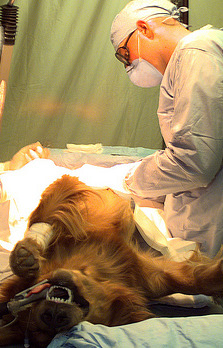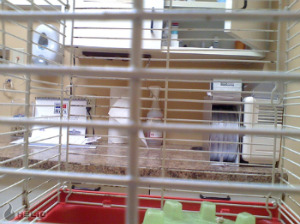|
Spay and NeuterIt's important that dog owners spay and neuter their dogs until the killing of millions of unwanted dogs in the U.S. every year ends. Tragically, millions of dogs are put to death each year, and what's even more tragic, is that this is preventable. You mustn't assume that your dog's beautiful litter of pups will find good and loving homes. In most cases, it doesn't happen. Finding homes for four to eight puppies is not an easy task. Obviously, you can't keep your dog's litter of puppies. But why assume that you'll be able to find them homes? More likely, they will end up in a shelter where according to the Humane Society of the United States, only half of those will find homes. That means that the other half of your precious dog's puppies will be killed. Here's an interesting statistic that will make you think about the importance of spaying and neutering. According to the The Dog Hause each day 10,000 humans are born in the US - and each day 70,000 puppies and kittens are born. That doesn't compute. At that rate there will never be enough homes for the number of animals born. Most animal experts agree that sterilized pets lead healthier, longer lives. Spaying a female eliminates the possibility of uterine and ovarian cancer and greatly reduces the risk of breast cancer. Neutering a male reduces the risk of both prostate enlargement and prostate cancer. Neutering also will make your pet more affectionate and less likely to roam, get in fights, or become lost. Spaying a female dog eliminates their heat cycles which can last twenty-one days, twice a year. (Links to other sites open in a new window). What Does it Mean to Spay and Neuter?Spaying Your Female Dog Prior to the surgery, a female dog is given blood tests, then an injection of a muscle-relaxer and a short-acting barbiturate to allow insertion of a tube into the dog's airway for air and anesthesia. A technician cleans and rinses the dog's belly, and then the surgeon clamps the skin to stretch it taut and begins the incision with a scalpel. The veterinarian removes the uterine body, the ovaries, and the tubes. Surgery takes about 25 minutes. Your dog can be spayed any time after eight weeks of age, and preferably before her first heat for the best health benefits. The first heat cycle occurs somewhere around six months of age, depending on the breed. You may or may not be able to take her home the same day. Neutering Your Male Dog According to Dog Time, under anesthesia, an incision is made in front of the scrotum, and then the testicles are removed through that incision. The stalks of the testicles are cut. Sometimes the incision needs stitches. A male dog can be neutered any time after eight weeks of age. Most dogs can go home the same day. Photo by UNC CFC USFR via Flikr 
A Word of Caution: According to some vets including Mary C. Wakeman, D.V.M. of Show Dog Supersite, castration predisposes to highly malignant prostatic cancer. Nearly all dogs afflicted with this nasty tumor are neutered individuals. Testicular cancers are very rare and almost always benign. Perianal adenoma can be treated by castration if and when it arises. It too is benign although messy. With large breeds, early castration often results in an animal with an insufficient breadth of chest for orthopedic health. If you do choose to castrate your male dog, by all means wait until he is at least one year old for small to medium size breeds, or at least 2 years old for giant breeds. (As this information differs from what many dog experts advise, it's important you talk to your own veterinarian and do further research). Links to other sites open in a new window. In the case of a male dog, they of course do not have litters, so it is of the utmost importance that if you don't have your dog neutered, you are responsible for keeping your dog from roaming and potentially impregnating a female dog in heat. A neutered dog, however, is less likely to roam. Having a LitterIf you decide for some reason to allow your dog to have puppies, you are responsible for both the mother's and the puppy's health. You must be sure to properly care for your pregnant dog and once the puppies are born, you must be responsible for caring for them. The puppies need to stay with their mother until they are eight weeks old and then you must find good and loving homes for them. Otherwise you have no reason to allow your dog to have a litter, instead spay or neuter! Don't add to shelter over-population. Photo by Jay Shouldol via Flickr 
As always, I recommend you find your next dog at a shelter. Save a life. Be aware that most shelters now spay and neuter their dogs before they allow them to be adopted. If you find your dog somewhere other than a shelter, as part of
basic dog care, it's important that you have your dog spayed or neutered. Return from Spay and Neuter to Adopt the Right Dog Homepage
|





